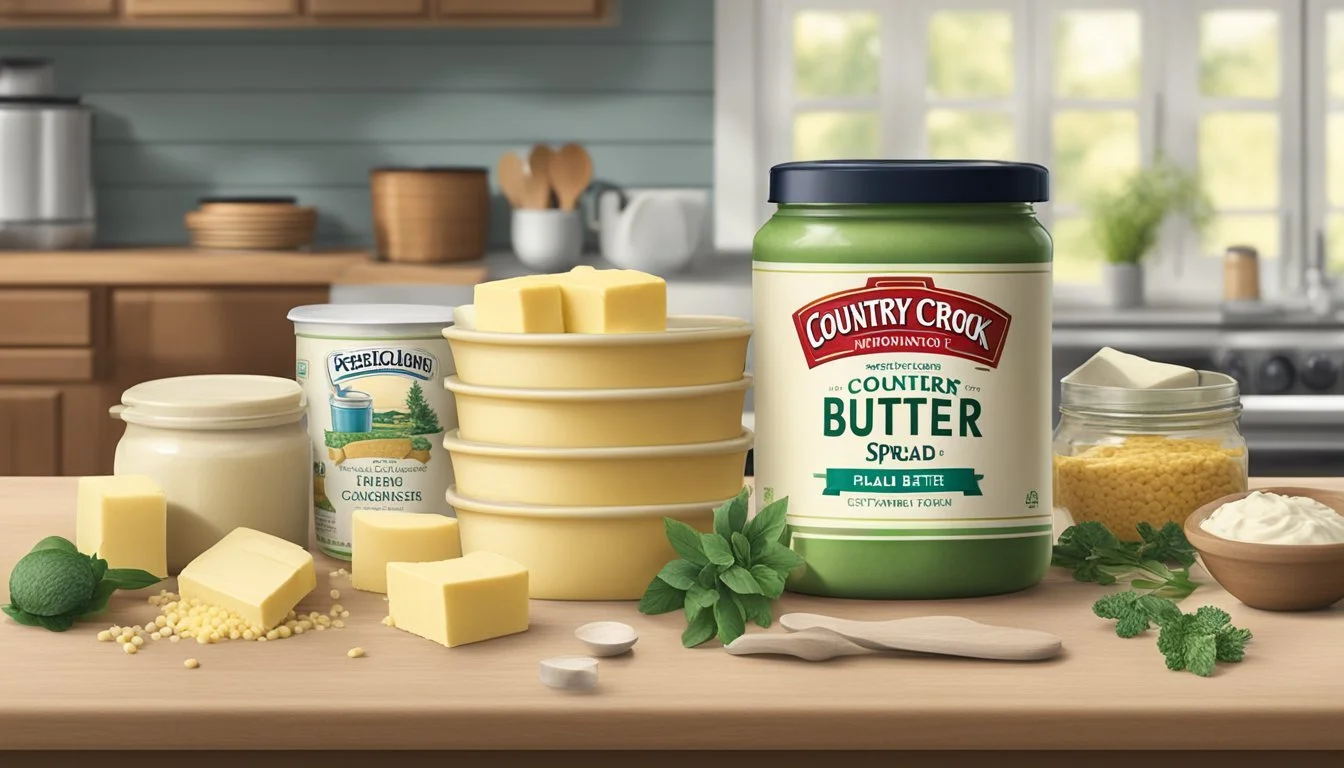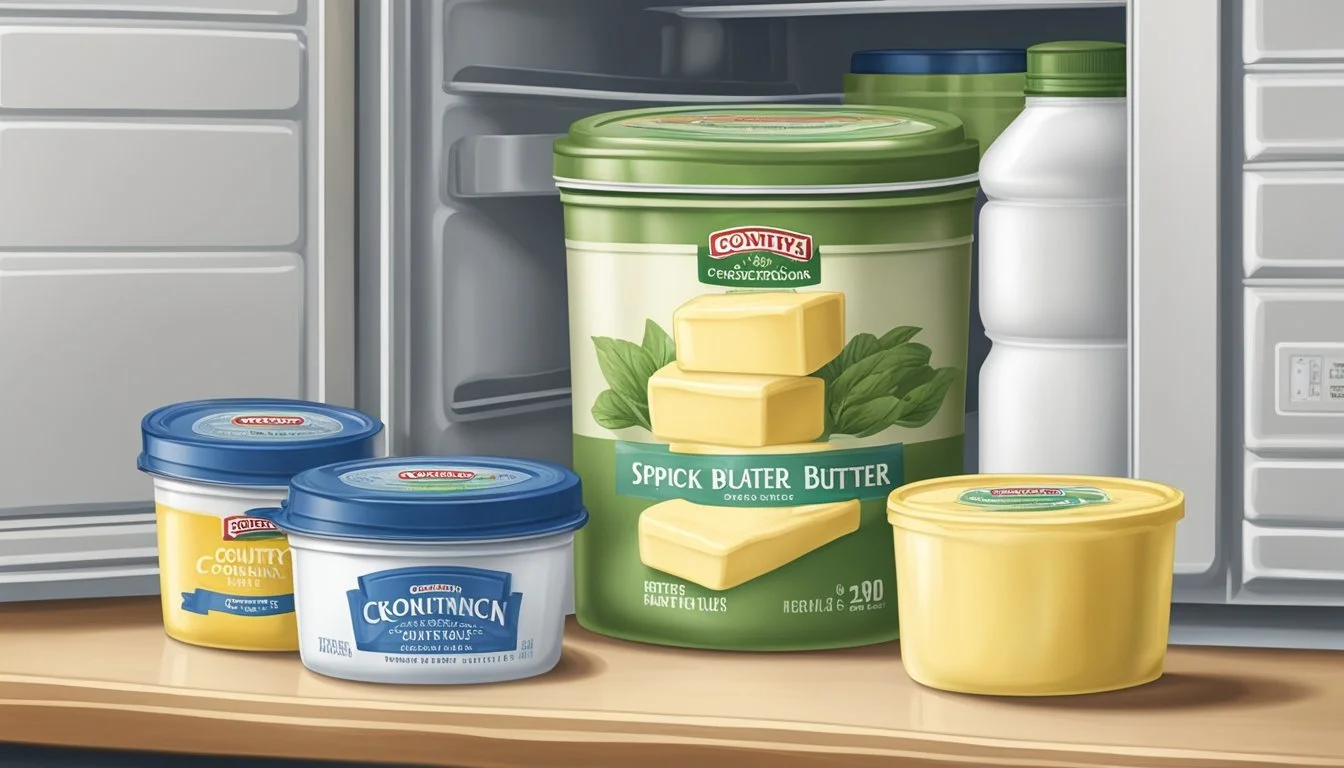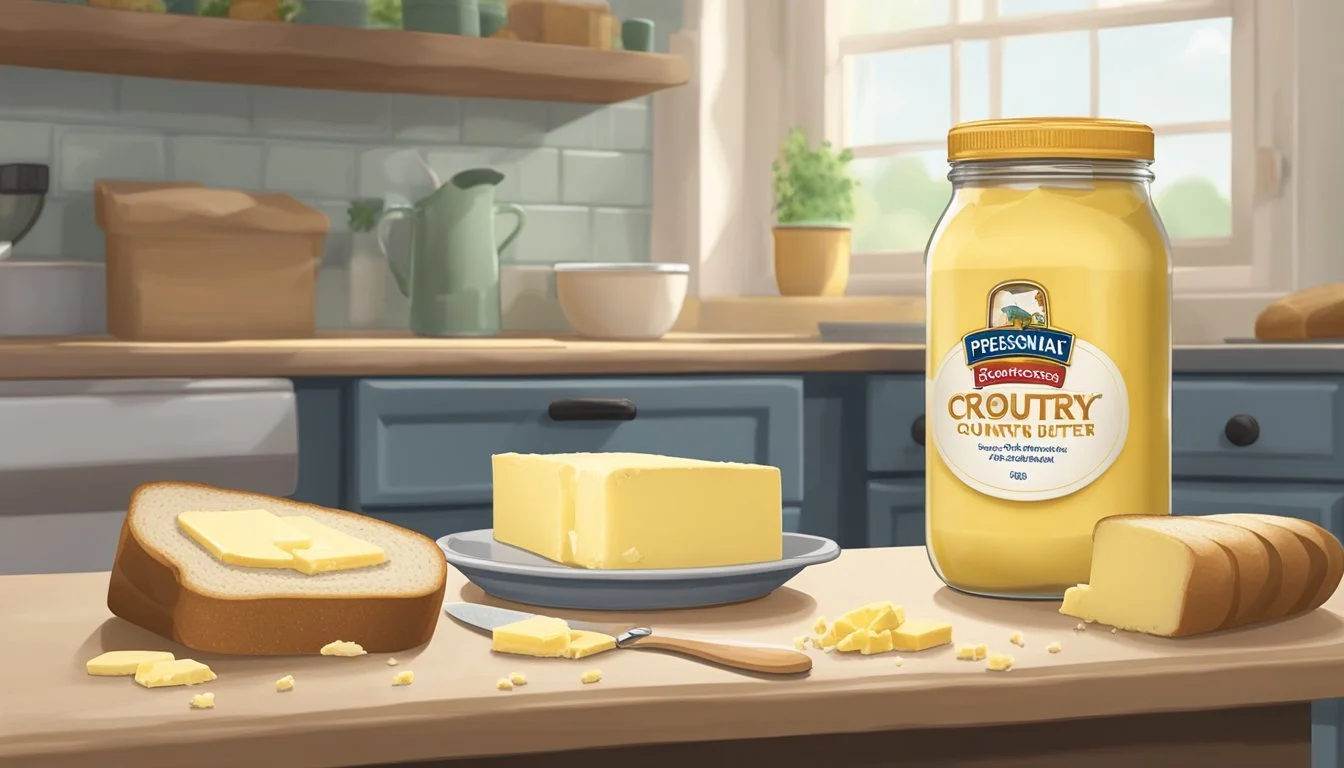How Long Does Country Crock Plant Butter Spread Last?
Shelf Life and Storage Tips
Country Crock plant butter (how long does butter last?) is a dairy-free alternative to traditional butter. Made from plant-based oils, it is designed to cater to those looking for vegan options or to those who are lactose intolerant while still preferring the buttery flavor and texture one expects from butter. As with all perishable food items, the shelf life of Country Crock plant butter is a point of consideration for consumers who value both freshness and food safety.
The longevity of Country Crock plant butter in one's pantry or refrigerator largely depends on its ingredients, packaging, and the conditions under which it is stored. Generally, an unopened tub or stick of this plant butter can last for several weeks, up to a few months, when stored correctly. Once opened, the spread should be kept refrigerated, with its lifespan varying but typically lasting around three months under optimal conditions. It's important for users to close the lid tightly after each use and store the butter in a cool, dark place, ideally within the refrigerator at temperatures between 32-41°F (0-5°C) to maintain its quality and prevent spoilage.
Changes in texture, color, or the presence of mold may indicate that the plant butter has gone bad. Users should always check for these signs before using the spread to ensure it hasn't deteriorated. If the consistency becomes too liquid or sticky, or if there's a noticeable color change or mold growth, the plant butter should be discarded. The key to prolonging the life of plant-based butter alternatives is proper storage and regular quality checks.
What Is Country Crock Plant Butter?
Country Crock Plant Butter is a dairy-free alternative to traditional butter, crafted from a blend of plant-based oils. It caters to various dietary preferences, offering a buttery experience without the use of dairy ingredients.
Defining Plant Butter
Plant butter is a type of spread made using oils extracted from plants instead of milk or cream from cows. Country Crock's version is primarily based on a mix of plant-based oils, including soybean, olive, almond, coconut, and palm kernel oils, emulsified with water and other ingredients like soy lecithin to maintain stability and spreadability.
Comparison to Dairy Butter and Margarine
Unlike dairy butter, which contains saturated fat and cholesterol, Country Crock Plant Butter is made with a blend of plant-based oils, and is both dairy-free and cholesterol-free. Compared to traditional margarine, it is marketed as a healthier option, often with lower levels of trans fats.
Taste and Texture Profile
The taste of Country Crock Plant Butter is designed to mimic that of traditional butter, while its texture is smooth and more spreadable straight from the fridge. This spread is known for its buttery flavor without the use of dairy products.
Varieties and Flavors
Country Crock Plant Butter comes in several varieties, including sticks and tubs with different flavor options such as olive oil, avocado, and almond oil. Some products are even seasoned for added taste, like the cinnamon honey spread.
Nutritional Information
On average, one tablespoon of Country Crock Plant Butter contains 100 calories, mainly from fat. The spread generally has lower saturated fat content compared to dairy butter—ranging between 1g and 5g of saturated fat per tablespoon.
Usage in Cooking and Baking
Country Crock Plant Butter can be used as a direct replacement for butter or margarine in recipes for cooking and baking. It lends itself well to various dishes, like mashed potatoes and pasta, due to its similar melting properties and flavor.
Dietary and Allergy Considerations
For those with specific dietary needs, Country Crock Plant Butter is a viable choice as it is dairy-free, gluten-free, and plant-based. It is also Certified Kosher Pareve and Certified Plant Based, making it suitable for a range of dietary requirements.
Environmental and Ethical Aspects
Country Crock positions its plant butter as better for the earth compared to dairy butter, implying that the manufacturing process and ingredients may have a lower environmental impact. Ethical consumers often consider such aspects important in their purchasing decisions.
Branding and Manufacturer
The brand behind this product, Country Crock, is owned by Upfield. Upfield is a leader in the plant-based food industry, and with its line of Country Crock products, aims to offer consumers plant-based alternatives to traditional dairy items.
Proper Storage of Plant Butter
Proper storage conditions are vital for maintaining the quality and extending the shelf life of Country Crock Plant Butter. By adhering to best practices for storing temperatures and packaging, spoilage can be prevented and the butter's intended flavors preserved.
Ideal Storage Conditions
Country Crock Plant Butter should be stored in a refrigerator at steady temperatures ranging from 32-41°F (0-5°C). An airtight container or original packaging is recommended to shield the butter from absorbing odors and prevent exposure to air which can accelerate spoilage.
How to Detect Spoilage
Spoilage is typically indicated by an off smell, sour smell, or the presence of mold. The spread's color and texture may also change. If any signs of spoilage are observed, the butter should be discarded to avoid potential health risks.
Freezing and Thawing Plant Butter
Freezing can extend the life of plant butter, keeping it usable for up to one year. To freeze, wrap the butter in aluminum foil or place it in an airtight container. Thaw in the refrigerator overnight before use to maintain its texture and consistency.
Maximizing Freshness
To achieve optimal freshness, keep the plant butter away from light and secure the lid tightly after each use. Regular checks for spoilage should be part of the routine to ensure the butter remains usable throughout its shelf life.
Packaging and Label Insights
Pay attention to the label for specific storage instructions and the "best by" date. Tubs should be kept in their original packaging, which is designed to preserve freshness. After opening, reseal and store as recommended.
Product Variants and Their Impact on Storage
Different varieties such as light, salted, and unsalted may have slightly different storage needs. Vegan butter variants should be stored as per the guidelines provided by the manufacturer, which generally align with the best practices mentioned above.
Shelf Life of Plant Butter
Plant butter, including products like Country Crock, offers a balance of practicality and taste with varying shelf lives depending on numerous factors. The reader should understand the average expected shelf life, how beyond-expiration use might be viable, the impact of storage conditions, and differences among plant butter types.
Average Shelf Life and Factors Affecting It
The average shelf life for plant-based butters, such as Country Crock, typically ranges from three to six months when refrigerated. The shelf life can be extended up to six months when stored in the freezer. Key factors influencing the shelf life include:
Temperature: Ideal refrigeration is at 32-41°F (0-5°C).
Packaging: An intact seal preserves freshness.
Flavors: Additives in flavored varieties, such as unsalted, salted, or light, may impact shelf life.
Using Plant Butter Beyond the Expiration Date
It is possible to use plant butter beyond its "best by" or "use by" date found on the label, with Country Crock products often remaining viable for several months past this date. However, consumers are advised to:
Look for signs of spoilage like changes in color or texture.
Smell for unusual odors indicating that the butter has gone bad.
Effects of Storage on Shelf Life
Storage plays a critical role in maintaining the quality of plant butter. For optimal longevity:
Close the lid tightly after each use to limit exposure to air.
Keep the tub in a cool, dark section of the fridge to minimize light exposure.
Place in the freezer to preserve for an extended period, although this may alter texture slightly.
Shelf Life of Different Plant Butter Types
Different types of plant butter may have varying shelf lives determined by their ingredients and production process. For example, vegan butter alternatives can have a similar shelf life to conventional options. Here is a brief comparison:
Standard Plant Butter Tub: 3-6 months in the fridge, up to 6 months frozen.
Flavored Varieties (e.g., garlic, herbs): Shelf life may be shorter due to added ingredients.
Baking Sticks: May last longer due to lower moisture content, making them less prone to spoilage.
Usage Tips for Plant Butter
Plant-based butters, such as those made by brands like Country Crock, offer a versatile substitute for dairy butter in both cooking and spreading. Understanding how to use them effectively enhances flavor and maintains desirable texture in various applications.
Incorporating Plant Butter in Recipes
When baking or cooking with plant butter, one can typically use it in a 1:1 ratio as a substitute for real butter. The plant butter should be at the right temperature — softened if creaming is required, or chilled for pastries needing solid fat cut into flour.
Plant Butter as a Spread
Plant butters are often more spreadable straight from the fridge compared to their dairy counterparts because of the inclusion of oils, such as olive oil. This makes them an excellent choice for spreading on toast or bread for a smooth texture and a hint of flavor.
Comparison with Other Fats in Cooking
Plant butter's fat content and ratio may differ from that of margarine or real butter, affecting its behavior during cooking or baking. Although it’s generally considered a healthier alternative with less saturated fats, adjustments might be needed to achieve the same results as when using heavy whipping cream or other fats.
Creative Uses of Plant Butter
Outside conventional uses, plant butter can shine in creative culinary scenarios. It can be whipped into frosting or used in frozen desserts like ice cream to add richness without dairy, offering a delicious solution for those with dietary restrictions.
These practical tips can help make the most of plant butter in everyday kitchen tasks, offering a combination of flavor and utility, whether one is baking a cake, frying up breakfast, or simply enjoying a slice of toast with a healthier spread.
Frequently Asked Questions
When choosing Country Crock Plant Butter, consumers often have questions regarding its use in culinary applications and its shelf life. This section aims to clarify common inquiries with straightforward answers.
Can You Microwave Plant Butter?
Yes, one can microwave Plant Butter to melt it for recipes or as a spread. However, it should be done in short intervals and at reduced power to prevent overheating, as Plant Butter melts at a similar rate to dairy butter.
Is Plant Butter Suitable for a Vegan Diet?
Country Crock Plant Butter is explicitly designed to be suitable for a vegan diet. It contains no animal-derived ingredients, making it an excellent butter substitute for those adhering to plant-based eating.
Can Plant Butter Be Used Like Dairy Butter?
Plant Butter can be used as a direct substitute for dairy butter in nearly all cooking and baking applications. Whether one needs to spread, sauté, or bake, Plant Butter performs similarly to traditional butter.
How Long Can You Freeze Plant Butter?
Freezing prolongs the shelf life of Plant Butter significantly. It can be stored in the freezer for up to 12 months. When freezing, ensure it's well-sealed to prevent freezer burn.
How to Use Plant Butter in Dairy-Free Baking?
In dairy-free baking, Plant Butter can replace dairy butter in a 1:1 ratio. For best results, use it at room temperature unless recipes specify otherwise. It will provide similar moisture and fat content, crucial for the texture of baked goods.







